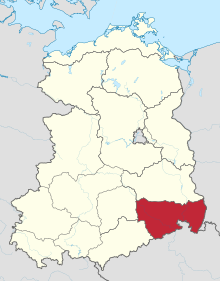
Saxony, officially the Free State of Saxony, is a landlocked state of Germany, bordering the states of Brandenburg, Saxony-Anhalt, Thuringia, Bavaria, as well as the countries of Poland and the Czech Republic. Its capital is Dresden, and its largest city is Leipzig. Saxony is the tenth largest of Germany's sixteen states, with an area of 18,413 square kilometres (7,109 sq mi), and the sixth most populous, with more than 4 million inhabitants.
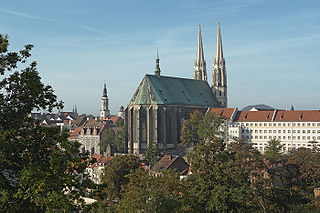
Görlitz is a town in the German state of Saxony. It is on the river Lusatian Neisse and is the largest town in Upper Lusatia as well as the second-largest town in the region of Lusatia after Cottbus. Görlitz is the easternmost town in Germany and lies opposite the Polish town of Zgorzelec, which was the eastern part of Görlitz until 1945. The town has approximately 56,000 inhabitants, which make Görlitz the sixth-largest town in Saxony. It is the seat of the district of Görlitz. Together with Zgorzelec it forms the Euro City of Görlitz/Zgorzelec, which has a combined population of around 86,000. Whilst not Lusatiophone itself, the town is situated just east of the Sorbian-speaking parts of Lusatia.

Chemnitz is the third-largest city in the German state of Saxony after Leipzig and Dresden. Chemnitz is the third-largest city in the Thuringian-Upper Saxon dialect area after Leipzig and Dresden. It is the fifth largest city in the area of former East Germany after (East) Berlin, Leipzig, Dresden and Halle. The city is part of the Central German Metropolitan Region, and lies in the middle of a string of cities sitting in the densely populated northern foreland of the Elster and Ore Mountains, stretching from Plauen in the southwest via Zwickau, Chemnitz and Freiberg to Dresden in the northeast.

Bischofswerda is a small town in eastern Germany at the western edge of Upper Lusatia in Saxony.
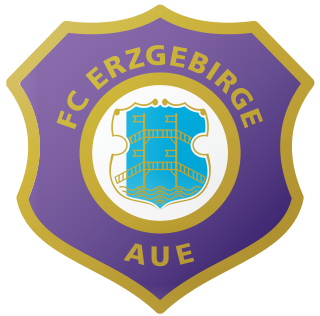
Fußball Club Erzgebirge Aue e.V., commonly known as simply FC Erzgebirge Aue or Erzgebirge Aue, is a German football club based in Aue-Bad Schlema, Saxony. The former East German side was a founding member of the 3. Liga in 2008–09, after being relegated from the 2. Bundesliga in 2007–08. The city of Aue-Bad Schlema has a population of about 20,800, making it one of the smallest cities to ever host a club playing at the second highest level of German football. However, the team attracts supporters from a larger urban area that includes Chemnitz and Zwickau, whose own football sides are among Aue's traditional rivals.
Oliver-Sven Buder is a German track and field athlete, who in the 1990s belonged to the best shot-putters in the world. The high point of his career came at the World Championships in 1997 and 1999 where he won the silver medal. Until 1990 he represented East Germany.
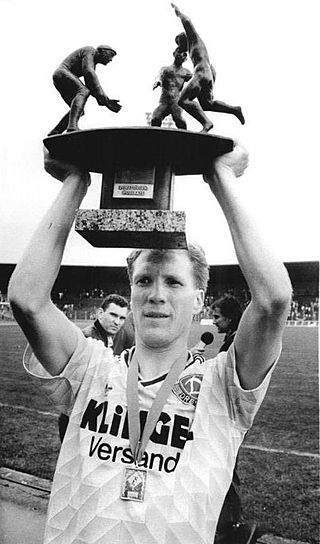
The FDGB-Pokal was an elimination football tournament held annually in East Germany. It was the second most important national title in East German football after the DDR-Oberliga championship. The founder of the competition was East Germany's major trade union.
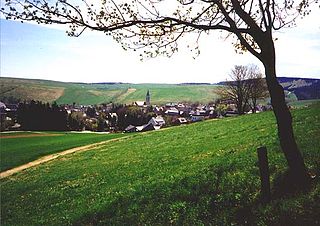
Oberwiesenthal is a town and a ski resort in the district of Erzgebirgskreis in Saxony in Germany. It is situated in the Ore Mountains, on the border with the Czech Republic, 19 km south of Annaberg-Buchholz, and 23 km northeast of Karlovy Vary. At 914 metres (2,999 ft), it is the highest town in Germany. The Olympic and World Championships goldmedalist in ski jumping Jens Weißflog competed for SC Tractor Oberwiesenthal and Oberwiesenthaler SV.
The administrative divisions of the German Democratic Republic were constituted in two different forms during the country's history. The GDR first retained the traditional German division into federated states called Länder, but in 1952 they were replaced with districts called Bezirke. Immediately before German reunification in 1990, the Länder were restored, but they were not effectively reconstituted until after reunification had completed.

Bärenstein is a municipality in the district of Erzgebirgskreis, in Saxony, Germany.
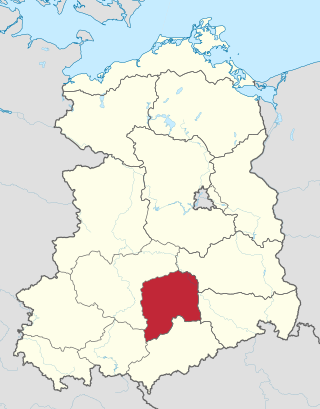
The Bezirk Leipzig was a district (Bezirk) of East Germany that would last from 1952 to 1990. Leipzig would be reabsorbed into Saxony after the reunification of Germany. The administrative seat and the main town was Leipzig.

The Bezirk Karl-Marx-Stadt, also known as Bezirk Chemnitz, was a district (Bezirk) of East Germany. The district would last from 1952 up to the Reunification of Germany in 1990. The administrative seat and the main town was Karl-Marx-Stadt, renamed back to Chemnitz during the reunification of Germany.
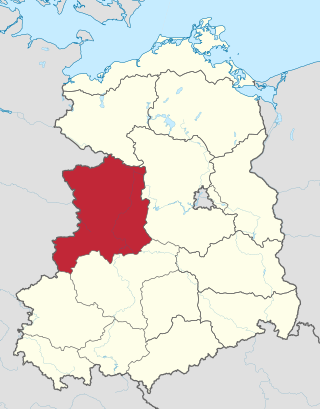
The Bezirk Magdeburg was a district (Bezirk) of East Germany. The administrative seat and the main town was Magdeburg.

The Bezirk Halle was a district (Bezirk) of East Germany. The administrative seat and the main town was Halle.

The Bezirk Schwerin was a district (Bezirk) of East Germany. The administrative seat and the main town was Schwerin.

Bezirk Cottbus was a district of the German Democratic Republic. The administrative seat and main town was Cottbus.

The Bezirk Gera was a district (Bezirk) of East Germany. The administrative seat and main town was Gera.

Jürgen Schmieder is a politician, originally from East Germany, who came to prominence during the months immediately preceding German reunification.
